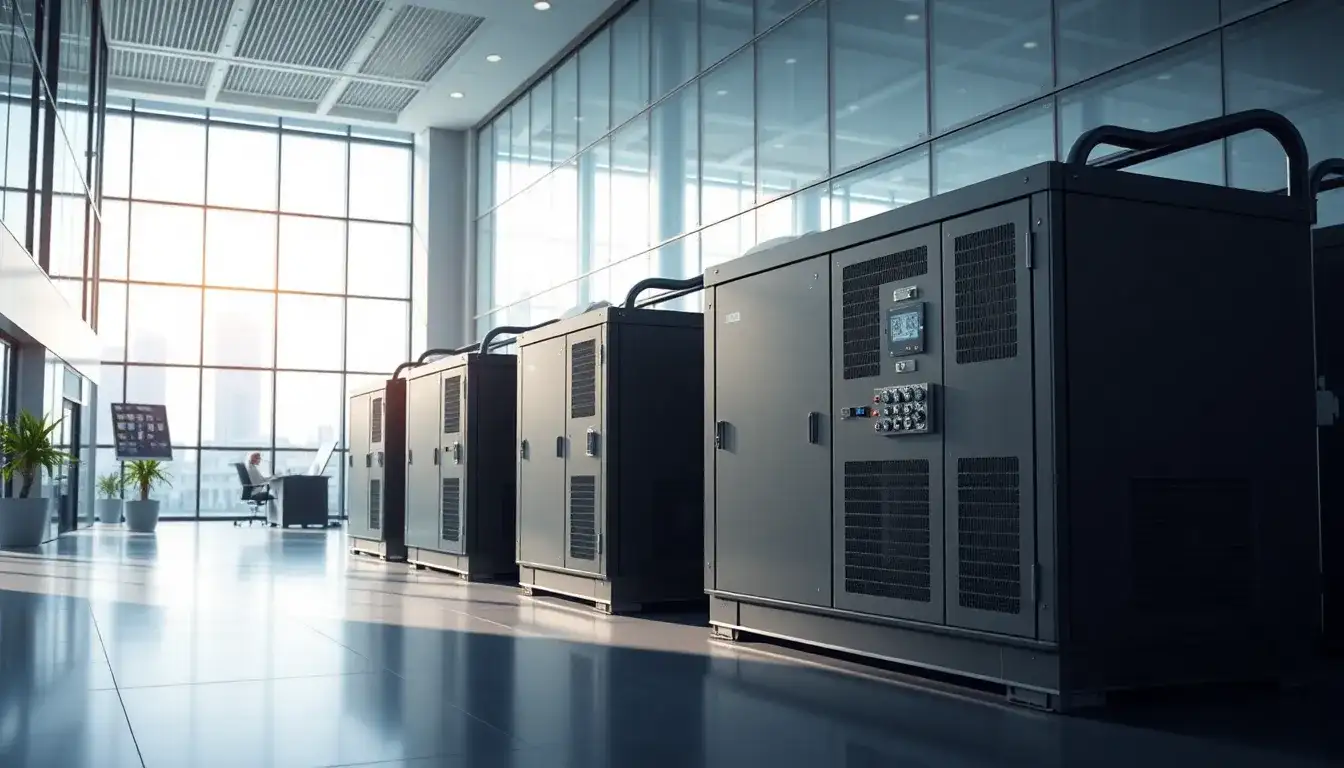
Commercial Complex Backup Power: A Comprehensive Analysis of Battery Energy Storage Systems
This article provides an in-depth analysis of the core equipment of backup power systems for commercial complexes—battery energy storage systems. It reveals how these systems ensure continuous power supply for large shopping malls, office buildings, and other settings. The focus is on system architecture, key technologies, and selection strategies to help enterprises establish highly reliable energy assurance solutions.
1. Equipment Definition: The Triple Role of Commercial Energy Storage Systems
The energy storage system for commercial complexes is designed as an integrated solution for emergency power supply, energy management, and demand response for large buildings exceeding 50,000 square meters, including shopping malls, star-rated hotels, and grade A office buildings. The core components include:
- Energy storage battery packs (Lithium Iron Phosphate/Lithium Titanate)
- Bi-directional inverters (conversion efficiency ≥ 95%)
- Intelligent distribution cabinets (supporting multi-circuit switching)
- Energy management systems (cloud-based + edge computing)
2. System Architecture: Four Core Components
- Battery Modules: Industrial-grade cells (cycle life ≥ 6,000 times) with modular design (single cabinet capacity of 100-500 kWh).
- Power Conversion System: High-frequency inverters (response time < 10 ms) and isolation transformers (to suppress harmonic interference).
- Monitoring and Management Platform: Real-time SOC/SOH monitoring and automatic charge/discharge strategies (peak and valley price optimization).
- Safety Protection Unit: Dual overcharge protection (hardware + software threshold) and a fire linkage system (smoke sensors + automatic extinguishing).
System Topology: [Grid Input] → [ATS Automatic Transfer Switch] → [Energy Storage System] ← [Load Equipment] ↑↓ ↑↓ [Generator Interface] ← [BMS Battery Management System] ← [Cloud Platform]
3. Five Application Scenarios: From Basic to Advanced
- Basic Level: Fire protection system power supply (meeting NFPA standards) ensuring 3 hours of continuous power (covering evacuation needs).
- Standard Level: Merchant operation assurance with uninterrupted power for essential loads like POS machines, lighting, and elevators.
- Enhanced Level: Protection for precision equipment such as data center servers and security monitoring without interruptions.
- Smart Level: Participation in demand response by discharging during grid peak shaving, thereby obtaining subsidy benefits.
- Ecological Level: Integrated solar and storage solutions combining rooftop photovoltaics with charging stations to create green commercial entities.
4. Key Selection Criteria: A Six-Dimensional Evaluation Model
- Capacity Matching: Calculate total load: air conditioning (40%), lighting (25%), elevators (15%), others (20%). Redundancy factor: recommended 1.2-1.5 times.
- Response Time: Information security devices should be < 8 ms; general lighting can accept 20 ms.
- Environmental Adaptability: Underground equipment rooms require IP55 protection level and noise control ≤ 60 dB (in office areas).
- Expansion Capability: Modular design supports future expansion and interface compatibility (supports multi-brand equipment access).
- Operational Costs: Total Cost of Ownership (TCO) comparison over 10 years and remote operation functions (reducing manual inspections).
- Certification System: Must comply with GB/T 36558-2018 energy storage standards and fire safety certifications (3C, UL, etc.).
5. Market Trends: Three Major Development Directions
- Liquid Cooling Technology: Battery temperature difference control < 3°C (extends lifespan by 20%).
- AI Energy Efficiency Management: Load forecasting based on digital twins (accuracy rate of 90%).
- Hydrogen Energy Fusion Systems: Fuel cell + lithium battery hybrid solutions suitable for 72-hour long backup.
Industry Data: By 2025, the commercial energy storage market is expected to exceed 20 billion yuan (annual compound growth rate of 35%). A leading project case features a commercial complex in Shanghai utilizing an 8 MWh energy storage system, resulting in annual electricity cost savings exceeding 3 million yuan.
Conclusion: The energy storage system for commercial complexes is evolving from a “backup power source” to a “smart energy hub.” When planning, enterprises should prioritize system scalability and operational convenience, selecting suppliers with comprehensive lifecycle service capabilities to gain a competitive edge in urban commercial energy assurance.







